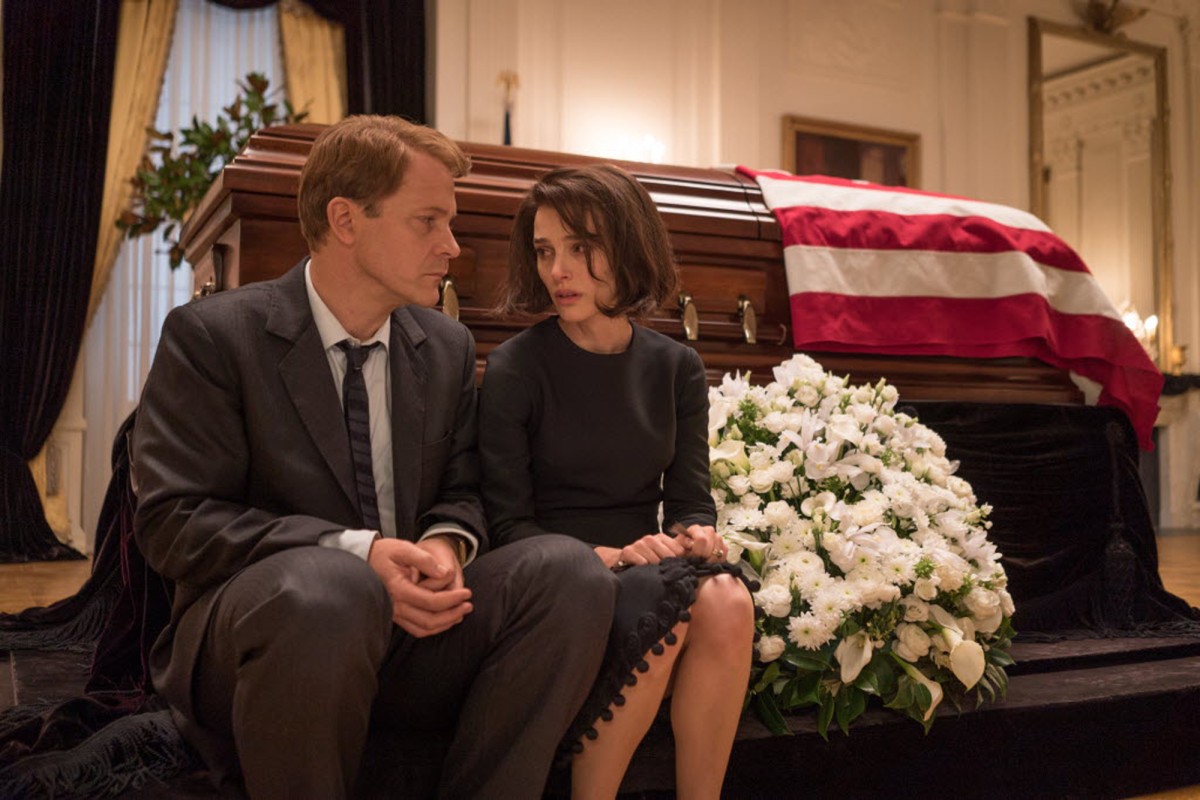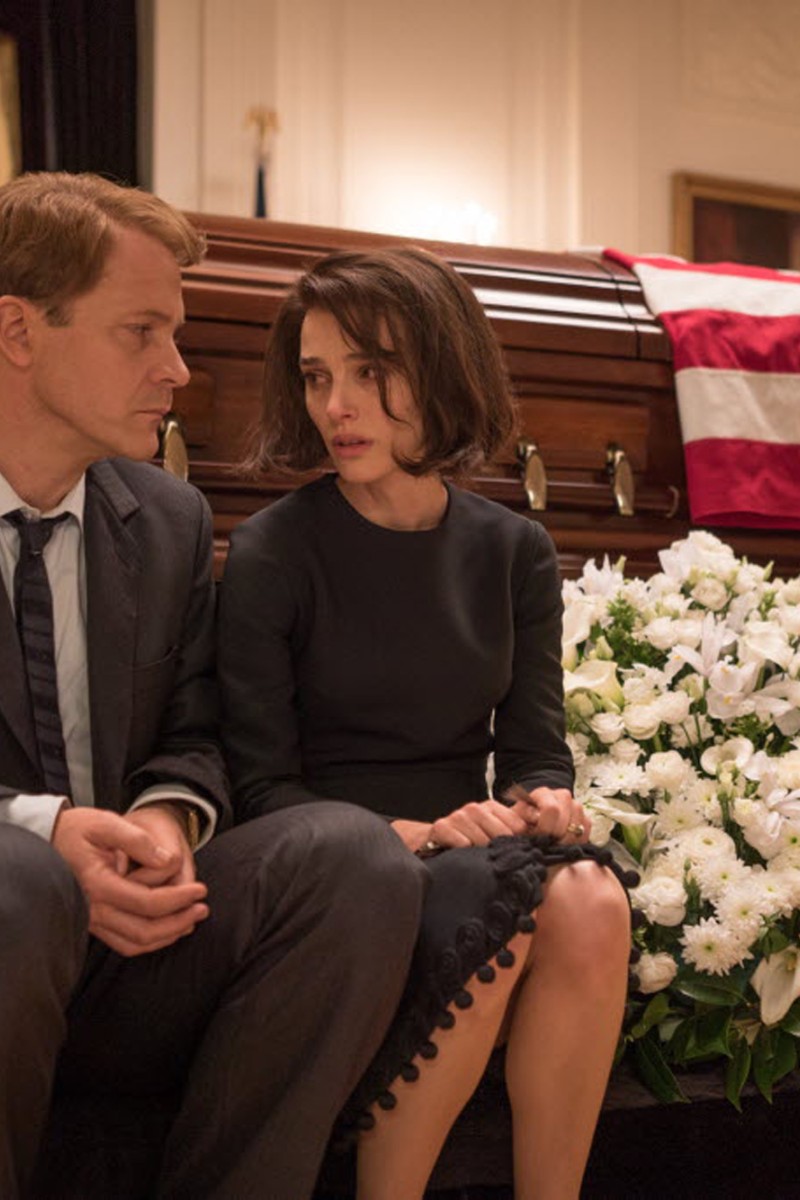 Bobby Kennedy (Peter Sarsgaard) and Jackie Kennedy (Natalie Portman) need to support each other following the death of President John F. Kennedy.
Bobby Kennedy (Peter Sarsgaard) and Jackie Kennedy (Natalie Portman) need to support each other following the death of President John F. Kennedy.Jackie is the kind of film that leaves you unsure of what exactly you’ve seen. This is not a criticism; merely a reflection of the fact that the multi-Oscar-nominated film is far more than just the biographical story you might expect. Focusing mainly on the seven days following the 1963 assassination of President John F. Kennedy, the film features Natalie Portman as a pitch- and picture-perfect version of the former first lady as she cycles through the grief and anger spawned by the reaction to her husband’s death. While this is, strictly a biopic – a film that dramatises the life of a historical person – it is as an arthouse film that this is particularly successful.
One week after the shocking death of JFK, a journalist is invited to interview Jackie about the murder, and about her life as first lady. She makes it very clear that she will be vetting the article, and it seems that the details she’ll share will therefore be highly sterilised; but, in a clever use of flashbacks, we experience the lofty highs and rock-bottom lows she herself went through over the previous two years. She goes from measured accounts of the shooting, near the beginning of the film, to a heart-wrenching recollection of the moment the second bullet struck, shattering Kennedy’s skull, and the attempts she made to hold the his head intact.
Chilean director Pablo Larrain makes highly effective use of the senses in his debut English-language: atmospheric, melancholic strings abound, often spikily punctuating a visually placid scene; costume, colour and lighting are used to reflect changes in mood (the neutral sweater she wears during the interview which takes place in and outside a – not The – white house, compared to the vibrant dresses worn to parties while she lived in The White House, and the dark shadows that play across Portman’s face during scenes at the burial ground); and unusual camera angles and techniques – extreme close-ups, 60s-style black and white, shots from behind as Portman looks in the mirror, but which don’t show her reflection – which lead to a range of reactions from puzzlement to actual discomfort.
Add to these stunning elements a hugely impressive cast, and you understand the fuss that’s been made about this film. Portman perfectly portrays the timid, slightly naive woman people assume Kennedy was, yet shows a very different side to her, a fierce, protective savvy individual, who flits from anguish to fury back down to melancholy over the course of a cigarette. We see her in many guises: a fairly new resident of the White House, full of quiet pride over her ongoing project to renovate the building and locate items belonging to former leaders so that the official residence can be a place that truly belongs to “the American people”; an emotional wreck as she finally is left alone to take off the outfit soaked in her husband’s blood; a jaded widow who has absolutely no idea what to do with her life.
But the supporting cast is also inspired, from Peter Sarsgaard as Robert Kennedy, torn between protecting his late brother’s family, and protecting his own political future, to the late John Hurd as a priest who tries to bring comfort and balance into Jackie’s life.
If you don’t enjoy non-linear storylines, and think sensory overload doesn’t belong in the cinema, this film is probably not for you. But if you appreciate a marriage of excellent acting, history, and visually arresting imagery, pick up your popcorn.
Brief strong language and one disturbing scene.

